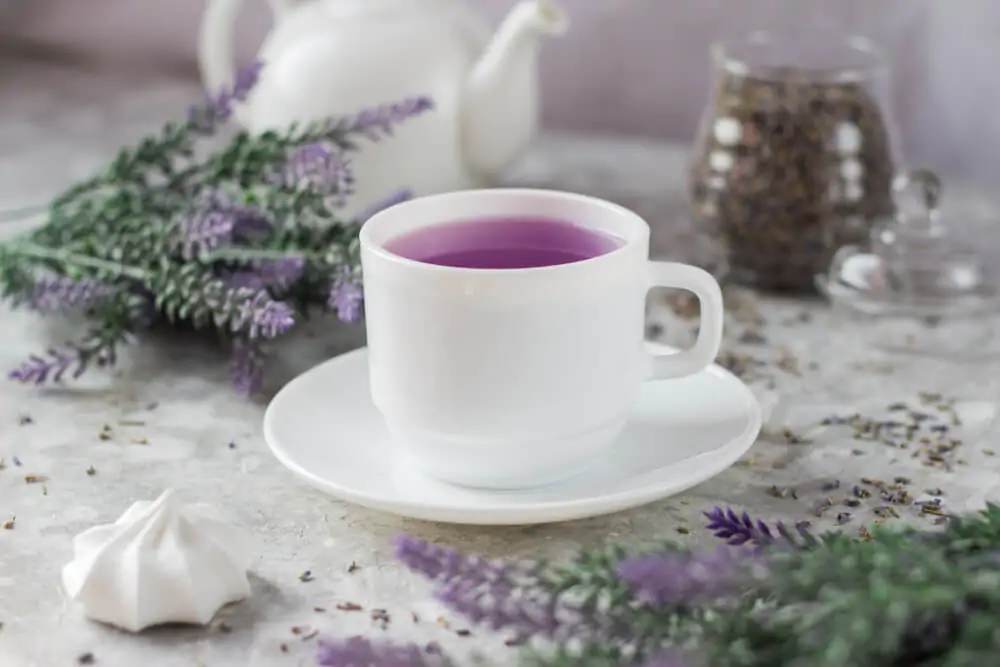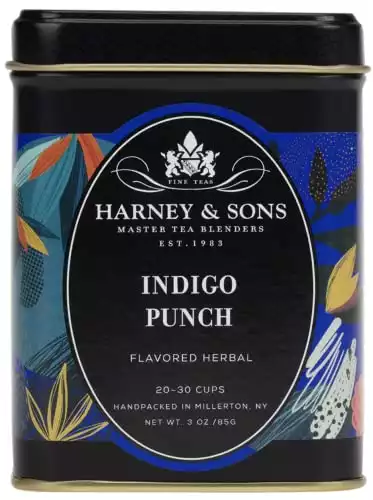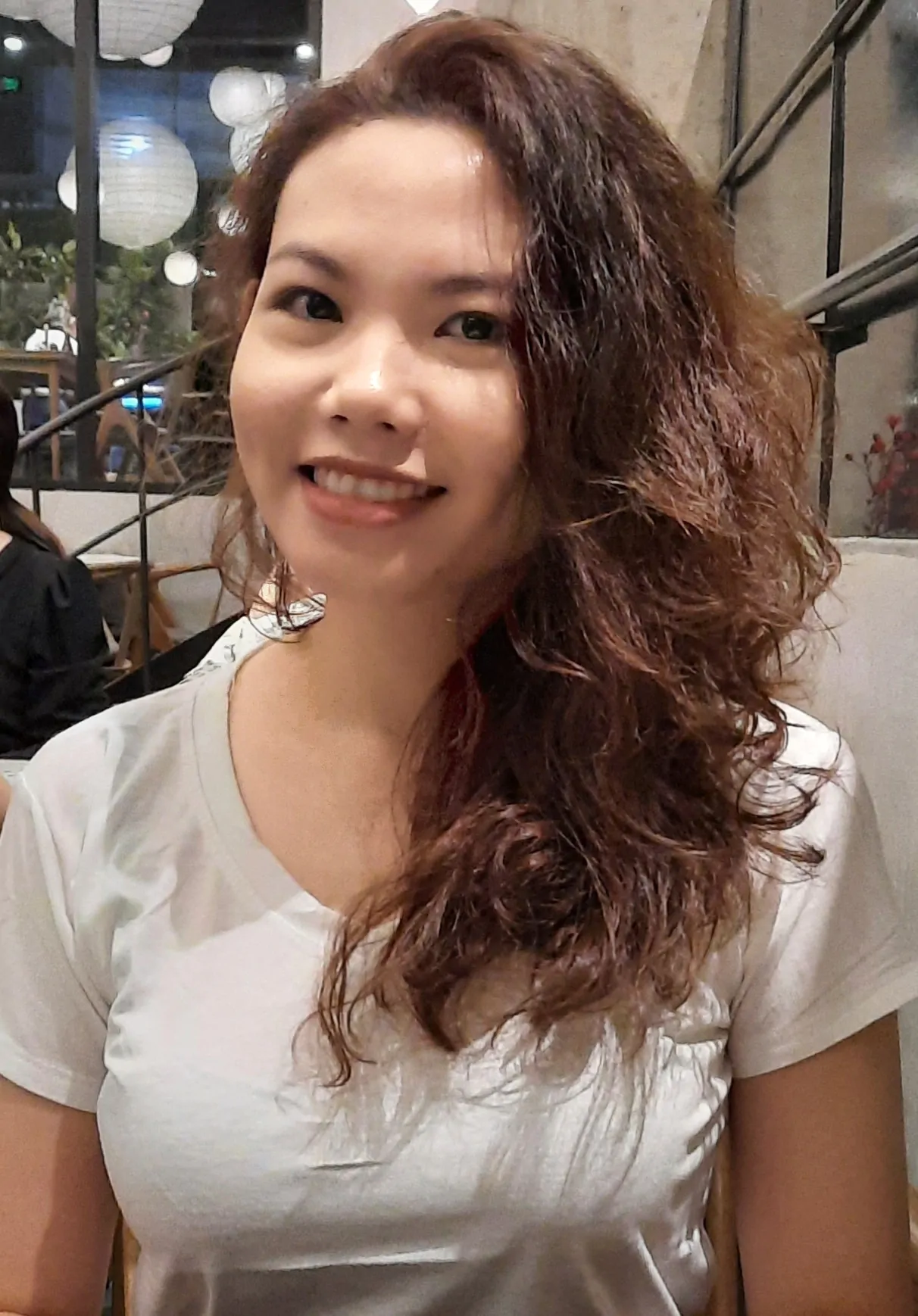Wondering what tea is purple, and if there’s only one kind of purple tea? This article will reveal shocking facts about purple tea not many people know.

Speaking of purple tea, people usually link it to Kenyan purple tea. But what if I tell you this is not the only kind of purple tea?
There are two types of purple tea. One of them comes from the Camellia sinensis plant species. The other one is a range of herbal teas, including lavender tea and butterfly pea flower tea, which are caffeine-free.
In this article, I will explain everything you need to know about three major types of tea with a unique purple color. Read on to find out.
Camellia Sinensis Purple Tea
Where Does Purple Tea Come From?

Purple teas get their unique color because it comes from a group of varietals with a high compound of anthocyanins. When growing in the wilderness, especially in areas with high UV radiation exposure, the tea will flush purple naturally.
However, in some cases, purple tea can also come from artificially crossing tea varieties and selective breeding, giving it this distinctive color.
Anthocyanins can be found everywhere in nature and are not exclusive to the purple tea varietal. Plants such as blueberries, blackberries, purple carrots, or eggplants, all contain a certain amount of anthocyanins.
Kenya and China are some of the most talked-about countries with a huge concentration of purple tea fields. The making procedure of purple tea also fluctuates depending on the country.
The making of purple tea in Kenya is similar to that of black tea. In China, however, the making of purple tea is similar to that of Pu’erh teas.
Check out our Yorkshire tea guide.
What Does Purple Tea Taste Like?

The tasting profile of purple tea depends on where it originated. The taste varies depending on if the buds or leaves were used.
Let’s go over some of the most popular purple teas in the world to see how their tastes differ.
- Kenyan purple tea goes through the same processing as black tea. You can feel a dominant earthy flavor leading on the palate, bold but flat.
- Chinese Zi Juan purple tea charms you with its flowery, sweet, and subtle flavor.
- Chinese Ye Sheng purple tea is a tad bitter with a sense of a tropical forest. It’s somehow softer on the tongue but comes with a recognizable sweetness.
- Elderberry tea is often purple too.
If you like purple tea, you might be interested in learning about yellow tea.
Lavender Tea
Just like purple tea, lavender tea is on the lesser-known side in the world of herbal tea. Going by with a prominent color and a delicate flavor, lavender tea has recognized calming effects which make it a stellar choice to be your gorgeous bedtime tea.
Unlike regular tea leaves which are made from Camellia sinensis, lavender tea is made of Lavandula angustifolia, the dried buds of the lavender flower. Lavender tea has me sold with its hints of rosemary and mint that I barely see in many other teas. When blended, lavender tea also distributes smoky or woody notes with a sweeter, fuller body and a hint of green apple in the aftertaste.
That being said, lavender tea is a great add-in to your bedtime routine. Other than that, lavender tea is rich in anti-inflammatory properties to protect your body from heart disease, and blood clots, soothe pain and minimize muscle spasms.
- Organic Lavender
- OU Kosher, USDA Organic, CCOF Organic
- 18 Bleach-Free Tea Bags
Butterfly Pea Flower Tea
Butterfly pea flower tea doesn’t appear purple on its own. When brewed with hot water, the tea delivers a gorgeous, soothing blue color at the beginning. And when you add a dash of lime juice, the tea switches to a vibrant, deep purple color when the pH level begins to change.
This is because of the acidity in lime juice. If you add more acidity, the tea will finally turn magenta and pink.
For the past few years, butterfly pea flower tea has been taking the world by storm as an incredible herbal tea that is rich in antioxidants and anti-inflammatory compounds. Butterfly pea flower tea is a staple in many Southeast Asian countries.
Unlike purple tea, butterfly pea flower tea doesn’t contain caffeine. Therefore, it has a subtle and mouthful taste with a delicate earthy note.
Besides antioxidants and anti-inflammatory compounds, butterfly pea flower tea is also a superfood for the brain. It has been used for centuries to treat anxiety, depression, ADHD, stress, and Alzheimer’s. Butterfly pea flower tea can also help control blood sugar levels, and protect against cell damage and diabetes.
Butterfly pea flower tea is safe to consume. However, overconsumption may lead to nausea and diarrhea. Ensure the tea doesn’t contain any powdered seeds and leaves as they can cause same side effects. You might also be interested in our red tea vs. green tea guide.
- Colorful and full of crisp, fruity flavors, Our new indigo punch combines the delicate tang of rosehips and apple pieces with the earthy tones of a gorgeous Butterfly pea flower
- Caffeine Free
- 3 ounces of loose tea, enough to brew 20 to 30 cups of tea
- Bright lemongrass, lemon peel, and vivid raspberry round out the palate of this beautiful brew, along with natural honey flavor for a touch of sweetness.
- Harney & Sons is a proud member of 1% for the Planet


